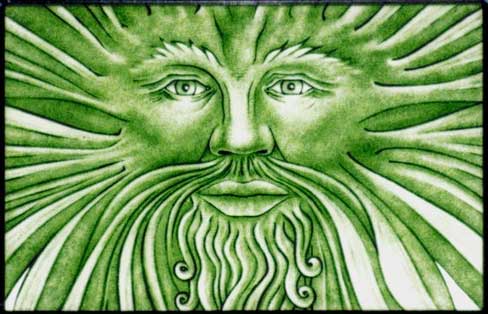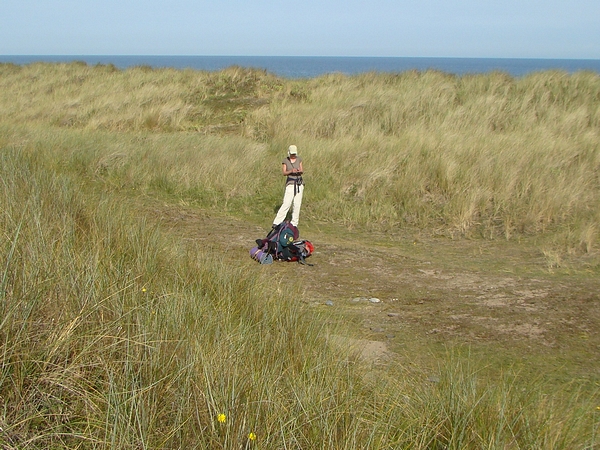Sussex Scrapbook
~
Nature walks throughout the year

7th - 21st August 2010
The Isle-of-Man
The small rock with
80,000 alcoholics hanging onto it that is known as
the Isle of Man (don't blame me, that's how they describe themselves) is all that remains of the top of an ancient, undersea mud slide after tectonic disturbance,
volcanic eruption, glacial
disfigurement, erosion and gravel/sediment deposition had all had a go at it. It now lies slap-bang in the
middle of the Irish Sea and is both surrounded by and partly made from England, Ireland, Scotland
and Wales. On a clear day you can see all of the four kingdoms from the top of
Snaefell mountain (the one the
TT course races around) and the island's position and construction means that
it delivers a true smorgasbord of British geology and wildlife. You won't find any
snakes, badgers or moles there, but you will find: wild mountain moors with resident
Hen Harriers and Ravens; miles of rocky cliffs with Choughs and Peregrines
performing aerobatics for you; spectacular sea stacks with
huge seabird colonies plastered onto them and empty sandy coves and beaches with
patrolling seals and Basking Sharks. All of this
and the place is virtually devoid of human life too. What more do you want? Well the
long-distance footpaths for a start -The
Raad ny Foillan or 'Way of the Gull' takes you through the whole spectrum of
delights that this old Viking colony has to offer and even though we didn't
complete the whole route around the island this time, the parts we did do were
magnificent and we would highly recommend any section to all hikers, no matter what their experience. Some
sections
require a head for heights and the ability to use map and compass and its all
pretty strenuous, but it is so well worth the exertion. The views are impressive
and picturesque and the wildlife's all about you.
The other named footpath is the
Millennium Way
which cuts a
swathe straight through the beautiful Manx mountains where Ravens and Hen
Harriers are your only companions. We did half of the Way, the mountainous 12
miles from Ramsey to Crosby
and it was superb. There's so much more to the IOM than the just motorcycle
racing, so if you ever get the chance to visit...do so!
We took about 3000 photos during our stay in the Isle-of-Man but here are just a pick of the crop to give you
a feeling for
the place.
The IOM coat of arms with attendant
Peregrine and
Raven. The motto translates as "whithersoever you throw it, it will stand".
The floral emblem of the IOM is the "Cushag" or Ragwort to the rest of us, which
as an
injurious plant is actually illegal to purposefully grow.
Our arrival on the island was celebrated by one and all...
... but we took the fastest form of
transport out of town...
... and hit the coastal path as
soon as we could.
The heather and gorse on the moors were in
their full-colour glory and there were birds everywhere. Birds that we don't get
much of a chance to see here in Sussex.
The rocks that make up the island have
undergone all types of land movement over geological time and this section along
the cliffs known as The Chasms has large cracks that plunge down to sea level.
Some are partially grown over so you have to tread carefully.
Gill says that there's never enough (any)
photos of me on our site, but that's only because I want people to continue to
enjoy looking at our photos.
Anyway, better do as I'm told... but this is the last one!
This large rock covered in Kittiwakes is called The Sugarloaf
and is right next to The Chasms.
Looking out south from Spanish Head across the
Calf Sound to Chicken
Rock lighthouse. We later spoke to a diver who had seen a Porpoise near here.
This small section of the
Raad ny Foillan from Port St Mary round to Port Erin, which is only 6.5
miles, can take you all day as the views are just far too amazing to be rushed.
Every walker we met (which wasn't really that many actually) said the same
thing.
Lots of
Peregrine action on the cliffs around
The Calf Sound, the area of sea that
separates the IOM from the small island called the
Calf of Man.
One of the iconic birds of the island and one of our favourites - the Chough.
A lot more than a crow with sunburn, these comical characters can keep you
entertained all day.
A very healthy colony of Sand Martins at Kirk Michael. You can see three chicks looking out
of the nest near the centre.
Redpoll
We had some good sightings of Basking Sharks all along the south-west coast of the
island. The picture shows a single shark, with the smaller fin being its tail.
Basking Shark at Peel.
Male Stonechat.
Grey Seals taking it easy.
They're working really hard at taking it easy.
A pair of
Wall Brown butterflies (Lasiommata megera).
Another icon of the island - a tailless
Manx cat with a bad attitude.
A very fresh specimen of Stinkhorn (Phallus impudicus) found on
Sky Hill, at the start of the
Millennium Way.
Bradda Head seen from the Neolithic
chambered cairn on Meayll Hill. What a fantastic spot!
Evidence of the Norse era is everywhere.
17th century headstones can always be
relied on to get straight to the point!
Sunset at Peel.
Up in the north-west of the island is the
major landmark of Jurby Church. The tower is leaning over a bit and the whole
building is in serious peril of collapsing.
If the old place does go over then it will disappoint a large colony of House
martins that breed there.

We camped out in the dunes near the point
of Ayre.
Sunrise at the Ayres
Bilberries (known as Blaeberries in IOM) growing in the dunes at
The Ayres, a nature reserve run by
Manx National
heritage.